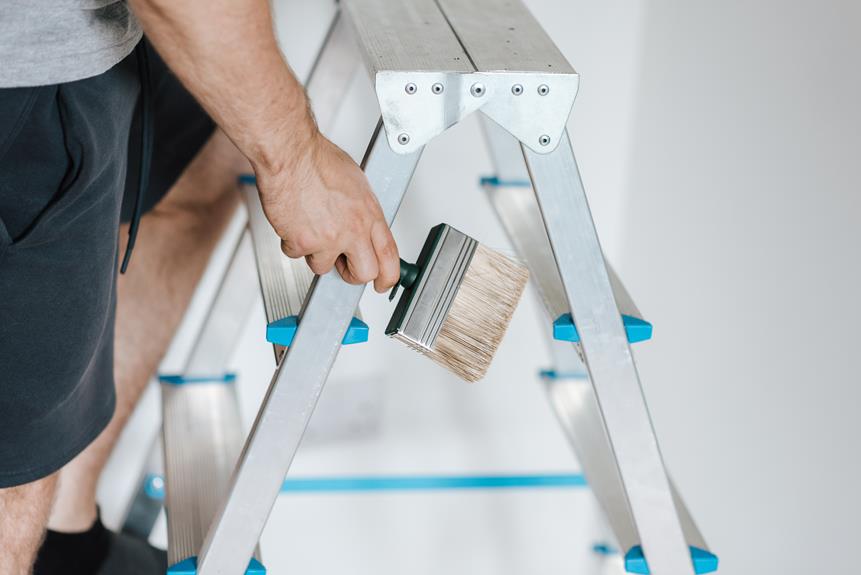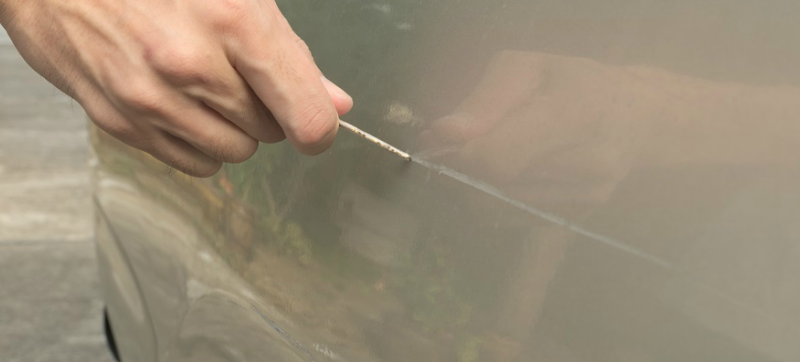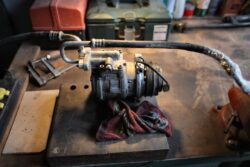Article Table Of Contents
- Understanding the Technique of Paintless Dent Repair
- Detailed Steps Involved in the Process of Paintless Dent Repair
- Tools and Equipment Used in Paintless Dent Repair
- Estimating the Cost and Time for Paintless Dent Repair
- Preparatory Measures Before Undertaking Paintless Dent Repair
- The Crucial Role of Paint Preservation in Paintless Dent Repair
- Importance of Skilled Technicians in Paintless Dent Repair
- Car Manufacturer and Insurance Approvals for Paintless Dent Repair
- Frequently Asked Questions
- Let’s Wrap This Up
Imagine you’re staring at an ugly dent on your beloved car. You’re upset, but don’t worry! We’re here to guide you through the process of paintless dent repair (PDR).
It’s a cost-effective, time-saving technique that’ll restore your car’s appearance without harming its original paintwork. You’ll learn about the tools, techniques, and skilled hands involved.
So, buckle up and let’s get your ride looking pristine again!
Key Takeaways
- Dent analysis is crucial to determine repair limitations.
- Modern cars with flexible paint jobs are best suited for this technique.
- The dent’s location and depth can impact the process’s complexity.
- Not all dents can be fixed with paintless dent repair.
Understanding the Technique of Paintless Dent Repair
Whilst you’re learning about paintless dent repair, it’s crucial that you grasp the technical nuances to understand how this process works effectively.
A crucial step is dent analysis. Here, experts assess the dent’s size, location, and severity. This analysis helps to determine the repair limitations. For instance, very deep or wide dents may not be fully repairable using paintless methods.
Remembering that this technique works best on modern cars with flexible paint jobs is important. Older vehicles with brittle paint mightn’t be suitable candidates.
Additionally, the location of the dent plays a significant role – if it’s in a hard-to-reach area, the process might become more complicated.
Detailed Steps Involved in the Process of Paintless Dent Repair
- Assessment: The first step in paintless dent repair is to assess the damage to the vehicle’s body. This involves examining the dent and determining if it can be repaired using this technique.
- Access: Once the assessment is complete, the next step is to gain access to the back of the dent. This may involve removing interior panels or accessing the dent underneath the vehicle.
- Manipulation: With access to the back of the dent, the technician will use specialized tools to carefully manipulate the metal back into its original shape. This process requires patience and precision to avoid causing further damage.
- Finishing Touches: After the dent has been manipulated, the technician
You’ll appreciate the precision involved when you delve into the detailed steps of the paintless dent repair process. First, a thorough assessment of the dent is conducted. Dent visibility plays a vital role here; the repair expert needs to determine the extent of the damage and the best approach to take.
The next step involves gaining access to the dent’s backside, typically by removing panels or liners. Then, specialised tools are used to gently massage the dent from the inside out. It’s a meticulous process that requires an experienced hand.
However, it’s crucial to understand the repair limitations. Not all dents can be fixed using this method. If the paint is cracked or the dent is too deep, traditional repair methods might be necessary.
Tools and Equipment Used in Paintless Dent Repair
When you’re tackling paintless dent repair, the tools and equipment you use can make all the difference.
Let’s explore the essential PDR tools, learn about advanced repair equipment, and discuss how to choose quality tools.
With the right knowledge and tools, you’ll be equipped to handle this task like a pro.
Essential PDR Tools
Armed with the right tools, you’re well on your way to mastering the art of paintless dent repair (PDR). Essential PDR tools not only make the job easier but also ensure precision. Proper tool maintenance is crucial; clean, well-kept tools can significantly improve your dent analysis and repair outcomes.
Here’s a basic list of must-have PDR tools:
- PDR Light or Line Board: Illuminates dents for careful analysis.
- LED PDR light: Offers adjustable brightness.
- Reflective line board: Helps identify the depth and shape of the dent.
- PDR Rods and Hammers: Used to gently push or tap out the dent.
- Flat bar: For wider, shallow dents.
- Sharp tip rod: For small, deep dents.
- Glue Pulling Tools: Ideal for dents where PDR rods can’t reach. These tools can make your PDR process seamless and efficient when used correctly.
Advanced Repair Equipment
Beyond your technician’s toolkit, a range of advanced equipment enhances the efficiency and effectiveness of paintless dent repair. These include specialised lighting systems that allow for better visibility of the dent’s depth and location and hot glue systems to carefully pull the dent out without damaging the paint.
Equipment maintenance plays a crucial role in ensuring these tools perform optimally. Regular upkeep and inspections ensure that the equipment is in top shape and ready to tackle the most stubborn dents.
Innovative technologies, such as 3D dent measurement devices, have revolutionised the industry, making the process more precise and efficient. With these advanced tools, you can rest assured that your vehicle’s bodywork will be returned to its original state with minimum fuss and maximum expertise.
Choosing Quality Tools
You’ll need to select top-notch tools and equipment for effective paintless dent repair. The quality of your tools matters, as it impacts not just the results of your work but also tool longevity. Investing in long-lasting, durable tools can save you money in the long run.
When choosing tools, consider:
- Type of Material: Opt for tools made from high-quality, robust materials to ensure their longevity.
- Ergonomics and Ease of Use: Choose tools that are comfortable and easy to use for long periods.
- Tool Storage: Good tool storage is essential. It keeps your tools organised, protects them from damage, and extends their lifespan.
Estimating the Cost and Time for Paintless Dent Repair
You’re probably wondering about the cost and time involved in paintless dent repair. It’s important to know that these factors can vary based on the severity and location of the dent on your vehicle.
In the next section, we’ll break down how professionals estimate these costs and timeframes to better understand you.
Determining Repair Costs
Let’s break down how to estimate the cost and time involved in paintless dent repair.
The entire process isn’t as daunting as you might think. First, consider the ‘Cost Variables.’ These include:
- The size and location of the dent. Larger dents usually cost more to repair.
- Dents located in hard-to-reach areas may require more time and, thus, add to the cost.
- The number of dents to be repaired. Multiple dents will naturally increase the overall cost.
Next, check your ‘Insurance Coverage.’ Some policies cover paintless dent repair, which can significantly reduce your out-of-pocket expenses.
The time for repair can vary, generally taking between a few hours and a couple of days, depending on the complexity of the job.
Timeframe for Repair
When you’re trying to figure out how long paintless dent repair might take, it’s important to bear in mind several key factors.
- Dent Severity and Repair Location certainly play a huge role in the timeframe. A minor dent can be fixed in just a few hours, whilst a severe one might take a day or two.
- If the dent is in a hard-to-reach area, this could also lengthen the repair time.
Remember, each case is unique, and it’s best to consult with a professional for a precise estimate.
Additionally, keep in mind that quality repairs shouldn’t be rushed. It’s better to allow ample time for the job to ensure that the result is flawless and your vehicle looks as good as new.
Preparatory Measures Before Undertaking Paintless Dent Repair
Before diving into the paintless dent repair process, it’s crucial that you properly prepare your vehicle to ensure the best possible results. This involves a thorough Dent Analysis and Damage Assessment. Here’s how you can go about it:
Dent Analysis:
- This is the first step, where you examine the dent to understand its size, location, and depth.
- Use a dent reflection board or light to highlight the damage.
- Take note of any paint chipping or cracking.
Damage Assessment:
- This involves a complete evaluation of the entire vehicle.
- Identify any additional dents or damage not initially apparent.
- Evaluate the overall condition of your vehicle’s paint and bodywork.
The Crucial Role of Paint Preservation in Paintless Dent Repair
You’re now ready to understand the crucial role of paint preservation in paintless dent repair. It’s essential to keep in mind that maintaining the original paint job is not only cosmetically important but also vital for the vehicle’s resale value. Paint preservation benefits are numerous, including a significant impact on car aesthetics.
The table below highlights the key points:
| Benefits | Elaboration | Importance |
|---|---|---|
| Maintains Original Paint | Paintless dent repair leaves the factory paint untouched. | Preserves authenticity and maximises resale value. |
| Enhances Aesthetics | Dents and scratches are removed without any trace of repair work. | Increases visual appeal. |
| Cost-Effective | No need for repainting means less time and money spent. | Economically beneficial. |
As you can see, paint preservation is a critical aspect of paintless dent repair, ensuring that your vehicle remains in top-notch condition.
Importance of Skilled Technicians in Paintless Dent Repair
Relying on skilled technicians for paintless dent repair is crucial for ensuring the best possible outcome for your vehicle’s appearance and value. With their extensive Technician Training, these professionals possess the necessary expertise to guarantee Repair Accuracy.
Below are reasons why skilled technicians are indispensable:
- Extensive Knowledge: Skilled technicians understand the intricacies of different vehicle models and know how to best approach each repair. This knowledge allows for accurate diagnosis and effective treatment plans.
- Precision: Skilled technicians use specialised tools with precision to restore your car’s bodywork without affecting the paint. This level of accuracy safeguards your vehicle’s value.
- Guaranteed Quality: Skilled technicians offer a warranty on their work, ensuring you’re covered if any issues arise post-repair. This warranty is a testament to their confidence in their skills and the quality of their work.
Car Manufacturer and Insurance Approvals for Paintless Dent Repair
In the realm of paintless dent repair, you’ll need approval from both your car’s manufacturer and your insurance company; this can sometimes be a complex process. Understanding manufacturer guidelines is crucial, as these rules dictate the correct methods for dent repair on your specific model. Failure to adhere to these can void your warranty.
Insurance negotiations are likewise critical. Some insurers may not cover paintless dent repair or need convincing of its effectiveness and cost-efficiency. You’ll need to provide evidence of the repair’s quality, usually through photos or professional assessments. It’s a process that requires patience and knowledge of the industry.
Always remember your goal is to maintain your car’s value while keeping costs down.
Frequently Asked Questions
Can Paintless Dent Repair Be Performed by a Car Owner Themselves?
Yes, you can perform paintless dent repair yourself. However, mastering dent assessment techniques is crucial. Without proper training, DIY repair risks include further damaging your car or not fully repairing the dent.
Are There Any Environmental Impacts Associated With Paintless Dent Repair?
Dent Repair Innovations prioritise sustainability measures. Your paintless dent repair’s environmental impact is minimal as it doesn’t use harmful chemicals or produce waste. It’s an eco-friendly choice for maintaining your car’s appearance.
Is Paintless Dent Repair Suitable for All Types of Car Dents?
Not every dent is a candidate for paintless repair. It depends largely on dent severity. Minor dents? Sure, you’ll save on repair costs. But for major damage, traditional repair methods might be your only salvation.
What Are the Disadvantages or Limitations of Paintless Dent Repair?
Whilst paintless dent repair can be cost-effective, it’s not always ideal. If your car’s dent is highly visible or deep, this method may not suffice. Also, it could potentially increase repair costs over time.
How Do Temperature and Weather Conditions Affect the Paintless Dent Repair?
In cold weather, dent expansion decreases, and material flexibility lessens, making paintless dent repair more challenging. Conversely, heat can over-expand the dents, also complicating the repair. You’ve got to consider these factors carefully.
Let’s Wrap This Up
In the world of auto repair, paintless dent repair stands out as a cost-effective, efficient method, saving you up to 60% compared to traditional methods. The magic lies in preserving the original paint and skilled technicians who meticulously work out dents.
With most car manufacturers and insurance companies approving this technique, it’s clear that paintless dent repair is a game-changer. So, next time your car gets a dent, consider going paintless. It’s a smart decision for your car and your wallet.






